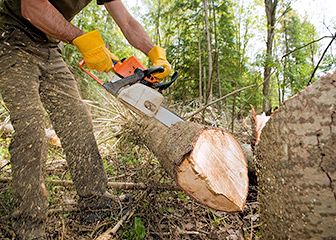Hand Tool Safety
Introduction
This first module examines the various hazards associated with working with tools and identifies ways to prevent worker injury through proper use of tools and personal protective equipment.
The employer is ultimately responsible for the safe condition of tools and equipment used by employees. Employers should never issue or permit the use of unsafe hand or power tools.
Employees should be trained in the proper use and handling of tools and equipment.
Workers should also be able to recognize the hazards associated with the different types of tools and the safety precautions necessary.
Five basic safety rules can help prevent hazards associated with the use of hand and power tools:
- Keep all tools in good condition with regular maintenance.
- Use the right tool for the job.
- Examine each tool for damage before use and do not use damaged tools.
- Operate tools according to the manufacturer's instructions.
- Provide and properly use the right personal protective equipment.
Employees and employers should work together to establish safe working procedures. If an employee encounters a hazardous situation, it should be brought to the attention of the supervisor or another responsible person immediately for hazard abatement.
Check out this short audio clip by Dan Clark of theSafetyBrief.com. It's easy to forget how dangerous tools can be. They're around every worksite and in constant use. Dan reminds us that tool safety is everyone's responsibility.
Knowledge Check Choose the best answer for the question.
1-1. Who is ultimately responsible for the safe condition of tools and equipment?
You forgot to answer the question!

